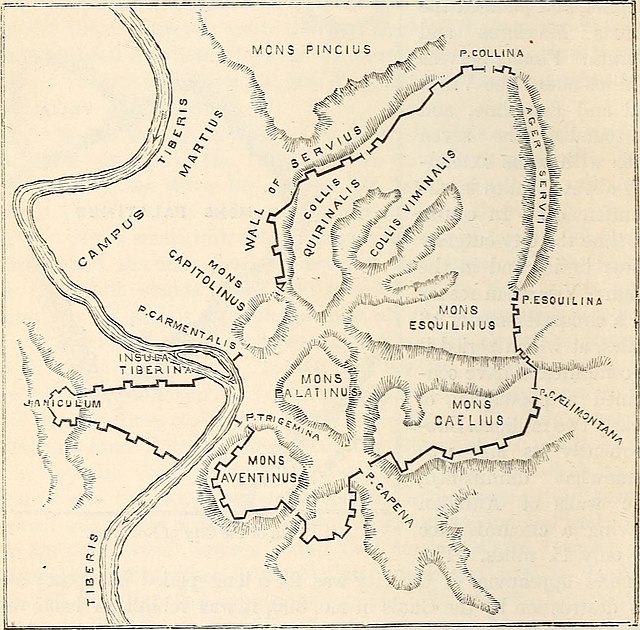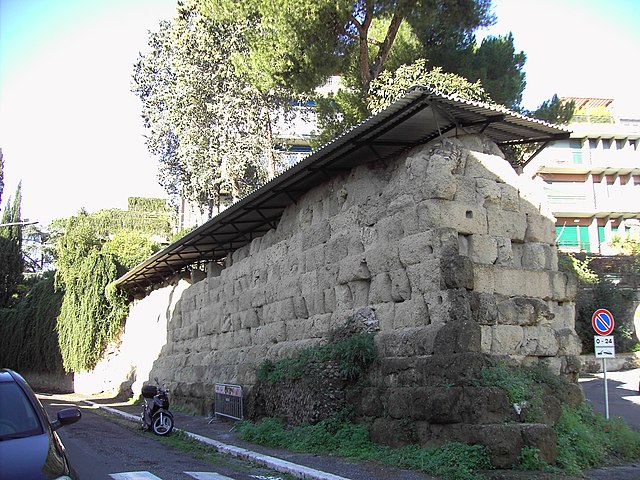The Porta Esquilina was a gate in the Servian Wall, of which the Arch of Gallienus is extant today. Tradition dates it back to the 6th century BC, when the Servian Wall was said to have been built by the Roman king Servius Tullius. However modern scholarship and evidence from archaeology indicate a date in the fourth century BC. The archway of the gate was rededicated in 262 as the Arch of Gallienus.
The Arch of Gallienus, the ancient Porta Esquilina
The gate is located in the eastern section of the Servian Wall.
The Servian Wall is an ancient Roman defensive barrier constructed around the city of Rome in the early 4th century BC. The wall was built of volcanic tuff and was up to 10 m (33 ft) in height in places, 3.6 m (12 ft) wide at its base, 11 km (6.8 mi) long, and is believed to have had 16 main gates, of which only one or two have survived, and enclosed a total area of 246 hectares. In the 3rd century AD it was superseded by the construction of the larger Aurelian Walls as the city of Rome grew beyond the boundary of the Servian Wall.
A preserved section of Servian Wall next to Termini railway station.
The Porta Esquilina was originally a gateway in the Servian Wall. In the later Roman Empire, it became known as the arch of Gallienus and was the starting point of the via Labicana and via Tiburtina.
The Servian Wall at Via di Sant Anselmo
in the Piazza Manfredo Fanti





